Writing crime fiction: Readers want someone else's fear, not their own
Writers must find the fears that titillate, rather than terrify.
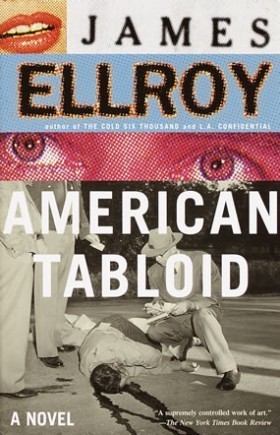 Americans fear public speaking and clowns. (Check out the polls. It’s true.) Surprisingly, they don’t fear being murdered by a psychopath or caught up in a case of mistaken identity which leads to them be pursued by the FBI.
Americans fear public speaking and clowns. (Check out the polls. It’s true.) Surprisingly, they don’t fear being murdered by a psychopath or caught up in a case of mistaken identity which leads to them be pursued by the FBI.
Surprisingly, that is, if you read thrillers.
Crime novels don’t hinge on the fears people confront in everyday life. But six of the current New York Times Top 10 bestseller list are thrillers. Why do so many people read crime novels, if not to experience real fear? You’d better have an answer figured out if you’re going to write a thriller that hits not on people’s true horrors, but on the fears they like to be teased with in literary form.
We can sum up the genre’s popularity this way: our innate conservatism enjoys seeing order disturbed (by murder) and then restored (by nabbing the bad guy.)
Hence the popularity of Scandinavian detective novels. Where else is there such order? The disturbance is consequently great. But we never fear that Wallander or Hole will fail to restore balance, and everyone can head for the sauna with a sense of security.
To prove this, look also at James Ellroy. He has said that his novels are too dark and gritty to have huge sales. His masterpiece American Tabloid has sold less than 400,000 copies. That’s a hell of a lot, of course. But many a lesser thriller writer shifts millions of copies of each book.
Ellroy’s novels are too close to our real fears. I don’t mean clowns. He undercuts the comforting realities of American history. When you read American Tabloid, you can’t help but think that if JFK was such a weak-willed, corrupt poon-hound, maybe all the other myths and foundations of our society are delusions too. There’s no coming back from that. So the sales stay low.
People like to maintain a distinction between fiction and reality.
They recognize the difference between fictional fear and real fear. The shock of 9/11 was, as many witnesses said, that it was “like a Hollywood disaster movie.” Like a fiction. Too much to take in as real. Which is why there was such a backlash against perceived perpetrators. They had killed a lot of people, sure. But they also had shattered our belief in the distinction between reality and nightmare.
Next we’ll try to figure out how to find the fears that titillate, rather than truly terrify. Let me know what fits the bill for you.
Related articles across the web
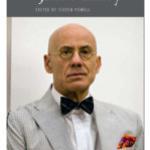 This Changes Everything: Ellroy and Mallon on the Assassination of JFK
This Changes Everything: Ellroy and Mallon on the Assassination of JFK
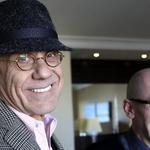 James Ellroy and David Peace: History Repeats Itself
James Ellroy and David Peace: History Repeats Itself
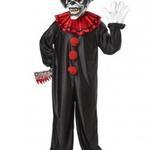 Evil Clown Costumes a Cause of Coulrophobia
Evil Clown Costumes a Cause of Coulrophobia
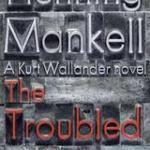 No: 739 The Troubled Man by Henning Mankell
No: 739 The Troubled Man by Henning Mankell
 Americans fear public speaking and clowns. (Check out the polls. It’s true.) Surprisingly, they don’t fear being murdered by a psychopath or caught up in a case of mistaken identity which leads to them be pursued by the FBI.
Americans fear public speaking and clowns. (Check out the polls. It’s true.) Surprisingly, they don’t fear being murdered by a psychopath or caught up in a case of mistaken identity which leads to them be pursued by the FBI.Surprisingly, that is, if you read thrillers.
Crime novels don’t hinge on the fears people confront in everyday life. But six of the current New York Times Top 10 bestseller list are thrillers. Why do so many people read crime novels, if not to experience real fear? You’d better have an answer figured out if you’re going to write a thriller that hits not on people’s true horrors, but on the fears they like to be teased with in literary form.
We can sum up the genre’s popularity this way: our innate conservatism enjoys seeing order disturbed (by murder) and then restored (by nabbing the bad guy.)
Hence the popularity of Scandinavian detective novels. Where else is there such order? The disturbance is consequently great. But we never fear that Wallander or Hole will fail to restore balance, and everyone can head for the sauna with a sense of security.
To prove this, look also at James Ellroy. He has said that his novels are too dark and gritty to have huge sales. His masterpiece American Tabloid has sold less than 400,000 copies. That’s a hell of a lot, of course. But many a lesser thriller writer shifts millions of copies of each book.
Ellroy’s novels are too close to our real fears. I don’t mean clowns. He undercuts the comforting realities of American history. When you read American Tabloid, you can’t help but think that if JFK was such a weak-willed, corrupt poon-hound, maybe all the other myths and foundations of our society are delusions too. There’s no coming back from that. So the sales stay low.
People like to maintain a distinction between fiction and reality.
They recognize the difference between fictional fear and real fear. The shock of 9/11 was, as many witnesses said, that it was “like a Hollywood disaster movie.” Like a fiction. Too much to take in as real. Which is why there was such a backlash against perceived perpetrators. They had killed a lot of people, sure. But they also had shattered our belief in the distinction between reality and nightmare.
Next we’ll try to figure out how to find the fears that titillate, rather than truly terrify. Let me know what fits the bill for you.
Related articles across the web
 This Changes Everything: Ellroy and Mallon on the Assassination of JFK
This Changes Everything: Ellroy and Mallon on the Assassination of JFK  James Ellroy and David Peace: History Repeats Itself
James Ellroy and David Peace: History Repeats Itself  Evil Clown Costumes a Cause of Coulrophobia
Evil Clown Costumes a Cause of Coulrophobia  No: 739 The Troubled Man by Henning Mankell
No: 739 The Troubled Man by Henning Mankell
Published on February 11, 2014 03:07
•
Tags:
crime-fiction, james-ellroy, scandinavian-crime-fiction, thrillers, writing, writing-tips
No comments have been added yet.



